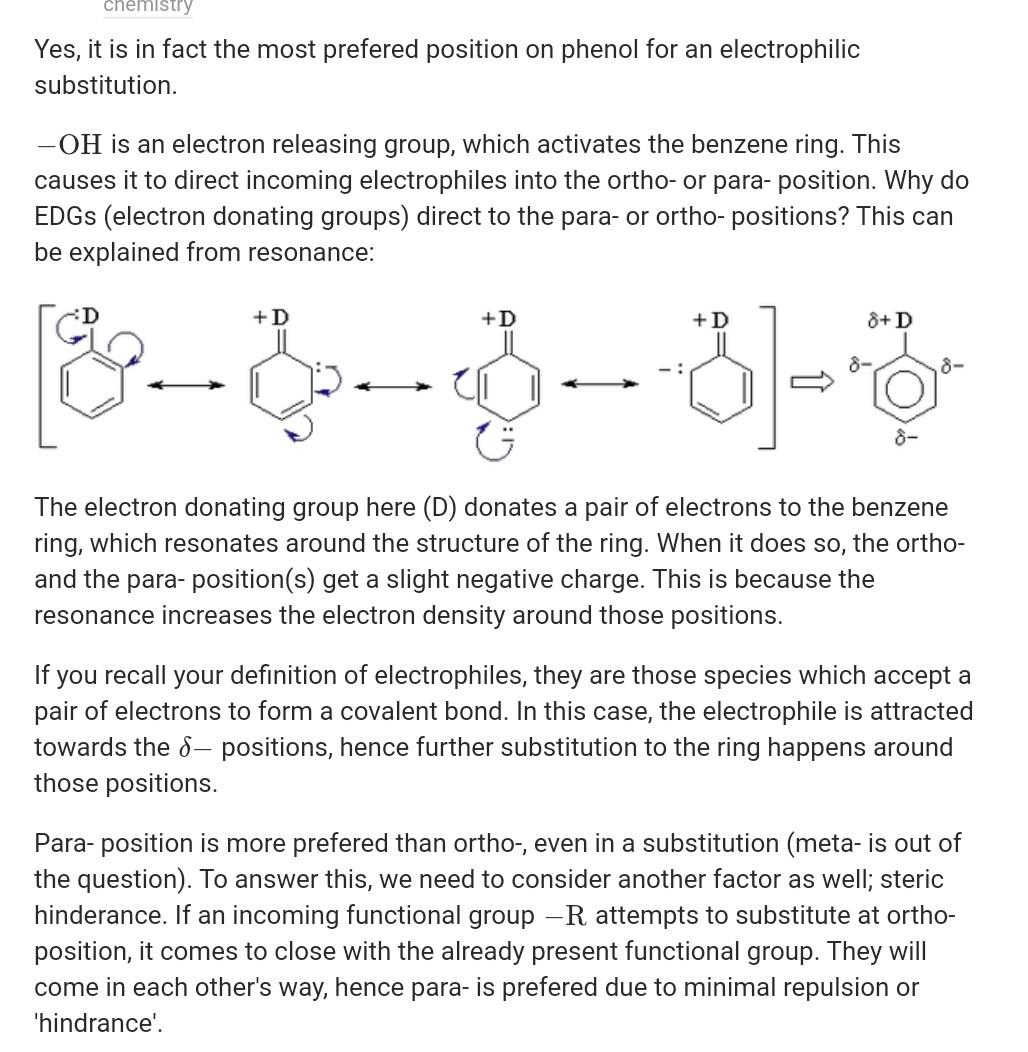Time management is very much important in IIT JAM. The eduncle test series for IIT JAM Mathematical Statistics helped me a lot in this portion. I am very thankful to the test series I bought from eduncle.
Nilanjan Bhowmick AIR 3, CSIR NET (Earth Science)Shweta Thakur posted an Question
- IIT JAM
- Chemistry (CY)
Why p phenol is more stable than o phenol.
why p phenol is more stable than o pncbxj bxhdjffhenol.
- 0 Likes
- 2 Comments
- 0 Shares
-
![comment-profile-img]() >
>
-
![comment-profile-img]() >
>
Dinesh khalmaniya 1
![best-answer]()
In case of phenol an electrophile can attack on ortho & para position due to the presence of negative charge at ortho and para position . If Intramolecular Hydrogen bonding is possible then Ortho product is dominating otherwise para. Para- position is more prefered than ortho-, even in a substitution (meta- is out of the question). To answer this, we need to consider another factor as well; steric hinderance. If an incoming functional group −R−R attempts to substitute at ortho- position, it comes to close with the already present functional group. They will come in each other's way, hence para- is prefered due to minimal repulsion or 'hindrance'. Nucleophilic reactions at meta position.
![cropped7268737894581185311.jpg]()
Do You Want Better RANK in Your Exam?
Start Your Preparations with Eduncle’s FREE Study Material
- Updated Syllabus, Paper Pattern & Full Exam Details
- Sample Theory of Most Important Topic
- Model Test Paper with Detailed Solutions
- Last 5 Years Question Papers & Answers
Sign Up to Download FREE Study Material Worth Rs. 500/-










 >
>
 >
>









Priyanshu kumar Best Answer
In generally for all case if we consider then para isomers is formed in high yield than ortho isomers if the substiuents is not specifying... As for ortho substituents there is steric hindrance caused by the group at the ortho position(steric repulsion) ,but this is not the case with para isomers...As due to far distance there is no steric hindrance no steric repulsion...So para isomers favours
Usually when an ortho-para directing substituent is present on the benzene ring for an electrophilic aromatic substitution reaction, the para product is the major product (exceptions can be there when hydrogen bonding or ortho effect of COOH group makes the ortho product a major one.)
Ortho nitrotoluene is a major product while para nitrotoluene is a minor product . Reasons: In case of reactivity: Ortho product is more reactive comparing with para product because electron density is more enriched at ortho position compared to the para position. In case of stability: Para product is more stable because is away from substituent group so it does not affected by steric hinderence as the ortho position Is more steric hindered.
please ask me if any doubt